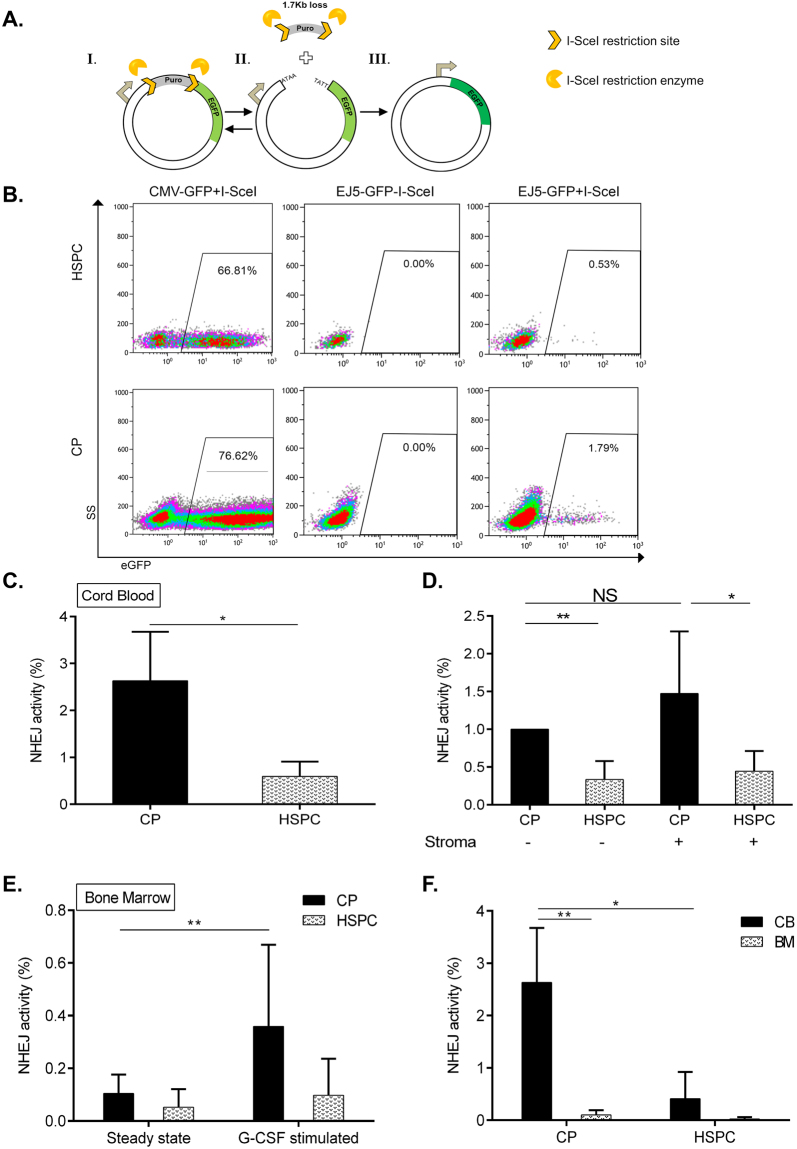Figure 3.
Analysis of DSB repair via NHEJ in CPs and HSPCs using a reporter system. (A) Schematic presentation of DSB repair substrate EJ5-GFP (I.) and I-SceI endonuclease-mediated cleavage (II.), triggering NHEJ processes which restore the EGFP expression cassette (III.). (B) Representative flow charts of NHEJ activity and nucleofection efficiency in HSPCs and CPs. Freshly isolated CD34+ cells from cord blood were nucleofected with plasmid CMV-GFP (positive control for EGFP expression) or EJ5-GFP reporter with or without I-SceI endonuclease expression plasmid and cultured for 24 h. Then, the proportion of viable EGFP + cells in HSPC- and CP- fractions gated as described in Fig. 1A was analyzed by flow cytometry. (C) NHEJ capacity of CP- and HSPC- enriched fractions isolated from cord blood (n = 3). (D) Nucleofected CD34+ cells from cord blood were plated in wells containing medium only or stroma layers for 24 hrs, followed by NHEJ capacity assessment in CP- and HSPC- enriched fractions. (E) Human bone marrow samples obtained from G-CSF treated (10 ug/kg for 5 days prior to harvesting) (n = 2) or steady-state control donors (n = 4) were nucleofected and processed for NHEJ activity assessment as described in Fig. 1B. NHEJ frequencies were individually normalized to the nucleofection efficiencies in each subpopulation and experiment. (F) Comparison of NHEJ frequencies of HSPCs and CPs derived from cord blood versus untreated bone marrow based on measurements presented in (C) and (E). Represented are mean values ± SD; *p value < 0.05, **p value < 0.01, NS, non-significant.

